#molecule of the day
Here’s a little organic chemistry exercise!
The drug propranolol (D, C16H21NO2), which is used to treat high blood pressure and anxiety, can be synthesised from 1-methoxynaphthalene through the following pathway.
Identify the unknowns AtoD, and draw the mechanisms of each step.

Reblog this post with your answers if you’d like me to take a look at them!
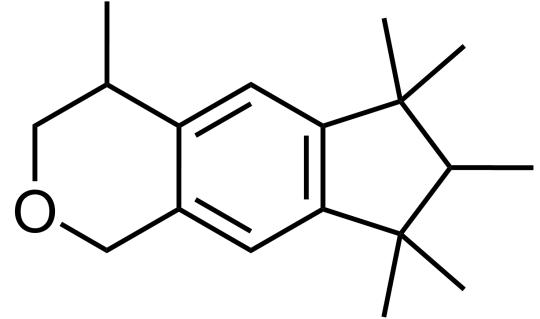
What smells do you associate with “cleanness”? Is it the clean, dewy freshness after a thunderstorm (due to geosmin - Day 14)? Or is it that warm, enveloping smoothness of clean linen?
If you’re thinking about the latter, Galaxolide (C18H26O) is probably responsible for that. It belongs to a class of compounds called “musks”, which are extremely commonly used in fragrances, from functional (detergents and soaps) to fine (perfumes).
Musks used to be obtained from musk pods - a gland of musk deer - since ancient times, when they were discovered to not only have an aroma of their own, but also acted as a fixative for fragrances, which is to say that it prolonged the lasting power of fragrances that it was added to. Natural musk can also be obtained from civet cats and muskrats, amongst other animals.

However, in recent decades, the industry has turned to synthetic musks due to sustainability and ethical concerns regarding the harvesting of musk pods.
The first synthetic musks were discovered serendipitously in the late 19th century; a chemist, Albert Bauer, was trying to find a more explosive analogue to trinitrotoluene (TNT - Day 58) when he noticed that the products of his experiments had a pleasant musky odour. These “nitro musks”, as they were called, found widespread use due to their relatively low costs and similarity to natural musk. Chanel famously used nitro musks in many of their perfumes, including No. 5.

However, nitro musks were eventually suspected of neurotoxicity, and were phased out; only one nitro musk, musk ketone, is currently approved to be used in the fragrance industry.
Other types of musks - macrocyclic musks, such as muscone and civettone, were isolated from natural musk from musk deer and civet cats. However, industrial synthesis proved too complicated and commercially unfeasible for the early 20th century.

The hunt for a new type of synthetic musk - one that was safe and cheap - was on again. In 1965, Galaxolide was first synthesised by International Flavors and Fragrances (IFF) in an attempt to make existing musks more chemically stable and hydrophobic, and was quickly utilised in many functional and fine fragrances due to its crisp, clean connotations; it was completely free of any animalic nuances, unlike molecules like muscone.
Why does the molecule have to be hydrophobic? Consider its purpose - when used in detergents, it would be a desirable quality to be able to adsorb onto fabric fibres and not be washed off by water. Its relatively large size meant that strong intermolecular forces of attractions would lead to low volatility too, thus allowing it to impart a long-lasting pleasant smell.

While Galaxolide was not the first polycyclic musk to be discovered, it is by far the most well-known one and is produced on a scale of 1,000 tons a year as of 2015.
However, with its ubiquity, its persistence in nature and its tendency to bioaccumulate has been brought under scrutiny. While no toxic effects to humans have been reported, it has still been a cause for concern as its effects on wildlife are not well understood.
And the search for new affordable, safe, and biodegradable musks continues…
My dear readers - what chemicals have you tried sniffing? Which ones had a nice aroma, and which ones smelled awful? Let me know in the comments!



β-Carotene (C40H56) is a naturally occurring terpenoid found in many vegetables and fruits, most famously in carrots. Under normal conditions, it exists as dark orange crystals. As a hydrocarbon, it is relatively non-polar and hence insoluble in water, but soluble in ethanol and hexane.
β-Carotene is a well-known nutrient; you may have seen it as an advertising point for products ranging from fruit juices to skin creams. It acts as a provitamin, as each molecule of β-carotene can be broken down in the body to form 2 molecules of retinal (a form of Vitamin A), which is needed for the maintenance of the immune system and good vision.
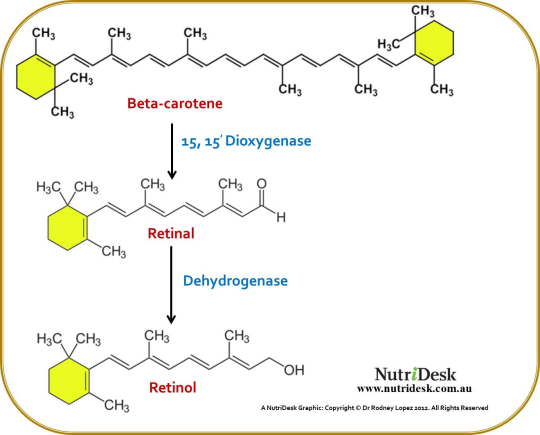
It is also sometimes used as a natural food colouring. Due to its intense orange colour, minute amounts are sufficient to colour a large amount of foodstuffs. (Below: solutions of varying concentrations of β-carotene)
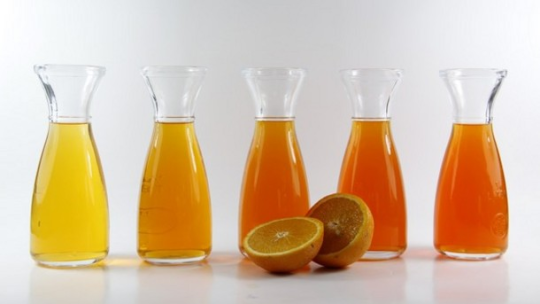
β-Carotene can be found in a variety of sources, including carrots, pumpkins, and beef liver. It is also present in palm oil, as well as some green leafy vegetables such as spinach, where its orange colour is masked by the presence of chlorophyll.

While β-carotene is present in many different types of food easily available in developed countries, many of them are difficult to obtain or store in developing countries. Consequently, many living in African and South Asian countries suffer from Vitamin A deficiency, which leads to night blindness.
To combat this phenomenon, Golden rice, a genetically-modified organism, is being developed.The genes coding for the enzymes phytoene synthaseandcarotene desaturase were inserted into the rice genome, allowing it to produce β-carotene from geranylgeranyl diphosphate, which is already present in the plant.

As a result, the rice grains produced from the plant have an orange colour, compared to the typical white grains from a normal rice plant, giving the crop the moniker Golden rice.

While β-carotene has many benefits, overconsumption can lead to an unfortunate but otherwise relatively harmless side effect, known as carotenodermia. As β-carotene is extremely lipophilic, it tends to be deposited inside our fat stores, manifesting as an orange discolouration of the skin. That aside, however, it is considered relatively non-toxic, as its metabolism to Vitamin A is controlled by the amount of Vitamin A in the body. As a result, an overdose of Vitamin A and hence toxicity is avoided.
That’s it for today’s molecule! Remember to eat your greens - and oranges too!



Ammonia (NH3) is a binary compound of nitrogen and hydrogen. Commonly found in nature, it exists as a pungent, colourless gas under standard conditions, but is often sold as a solution in water. It is one of the most widely produced chemicals in the world, with 146 million tonnes being produced in 2016 alone.
Ammonia is a weak base, with a pKb of 4.75; it can reversibly react with water to produce ammonium and hydroxide ions.
NH3 + H2O ⇌ NH4+ + OH-
Due to the equilibrium shown above, solutions containing ammonia and ammonium ions are commonly used as buffer solutions, which resist pH changes upon addition of small amounts of acids or bases.
At the same time, ammonia can also act as an acid with very strong bases and reactive metals. For example, sodium metal reacts with ammonia to produce sodium amide, a strong base:
2 Na + 2 NH3 → 2 NaNH2 + H2
With its lone pair, ammonia can also coordinate to metal ions, resulting in colourful metal ion complexes, such as the deep blue tetraamminecopper(II) ion:

Ammonia is a versatile starting block for many chemical and fertiliser industries, as it offers a convenient way to introduce a nitrogen atom into a molecule. Being a nucleophile, it can participate in nucleophilic substitution and addition-elimination reactions, a useful trait that is exploited in many chemical syntheses. For example, the first step in the Strecker amino acid synthesis, which allowed chemists to synthesise amino acids for the first time instead of extracting it from organic material, involves the usage of ammonia to convert an aldehyde into an imine.

Ammonia is industrially produced by the Haber process, in which nitrogen is reacted with hydrogen under moderate temperature and high pressure in the presence of a catalyst to produce ammonia according to the following equation:
N2 + 3 H2 ⇌ 2 NH3
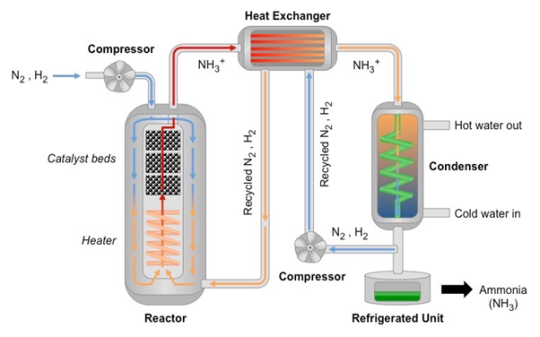
As the reaction is reversible, the reaction mixture is then cooled to condense the ammonia, and the leftover hydrogen and nitrogen is pumped back into the reactor to participate in the reaction again, thus maximising yield.
Ammonia is a metabolic waste from the digestion of proteins and other nitrogen-containing products, and is excreted through the urine. It is also produced from the decomposition of tissues.
While ammonia is present in many tissues, it is metabolised into urea rapidly in the liver via the urea cycle, as urea is much less toxic and basic, and the buildup of ammonia can result in liver cirrhosis.
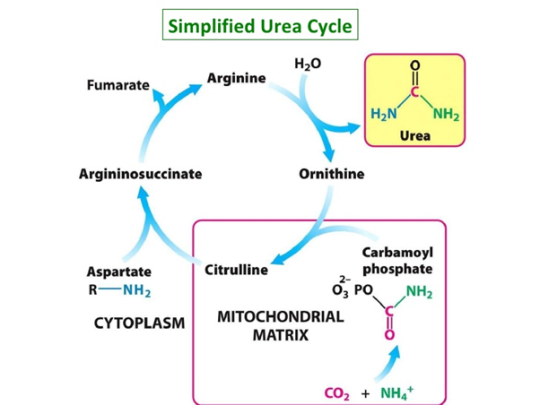


Methamphetamine (C10H15N), also known as meth or crystal meth, is a colourless liquid at room temperature. It is more commonly encountered as the hydrochloride salt (C10H15N.HCl), which is a white solid under standard conditions. It is a central nervous system stimulant, and is used as a recreational drug.
Methamphetamine acts as an agonist at trace amine-associated receptor 1 (TAAR1), resulting in the release of cyclic adenosine monophosphate. This causes dopamine and noradrenaline transporters to reverse the movement of dopamine and noradrenaline through them; instead of taking them up from the synapse, it releases them from the cell. Furthermore, it inhibits monoamine oxidase (MAO), which normally breaks down dopamine and noradrenaline.

The resultant increase in dopamine and noradrenaline in the synapse causes the corresponding receptors on the postsynaptic membrane to be stimulated to a greater extent, resulting in feelings of euphoria, increased alertness, and a raised heart rate.
Methamphetamine, however, has a high risk of addiction. The high levels of dopamine and noradrenaline can result in tolerance by the body as the postsynaptic neuron reduces the number of receptors to modulate the stimulus. A protein called ΔFosB is also produced in the neurons, resulting in the increased transcription of certain genes, producing addictive behaviour.
As ΔFosB is degraded much more slowly than related proteins, it accumulates upon regular consumption of methamphetamine, resulting in increasing levels of addiction.

Methamphetamine also produces a range of side effects such as loss of appetite, dry skin, acne, insomnia, irregular heartbeat, psychosis, scratching of the skin, as well as loss of teeth. An overdose can also result in tremors, hyperthermia, cerebral haemorrhaging, kidney failure, circulatory collapse, coma, and death. (Below: before/after methamphetamine consumption)


It has been used as a treatment for attention-deficit hyperactivity disorder and obesity, albeit rarely due to its significant drawbacks compared to other existing treatments for these conditions. One of its isomers, levomethamphetamine (below left), is also used in nasal decongestant sprays as it results in vasoconstriction. Unlike its optical isomer, dextromethamphetamine (below right), it does not result in addiction and dependence.

Methamphetamine can be easily synthesised from the condensation of phenylacetone with methylamine, followed by reductive amination:

Note: This post is intended to examine the compound from a chemical/medical point of view for educational purposes, and does not endorse drug abuse in any way.


Omeprazole (C17H19N3O3S) is a drug used to treat acid reflux, stomach ulcers, and indigestion. Under standard conditions, it is a white powder that is sparingly soluble in water.
Omeprazole acts as an irreversible proton-pump inhibitor. It binds permanently to active H+/K+-ATPase systems found in the stomach lining, preventing H+ ions from being shuttled into the stomach. This causes a reduction in gastric acid production.

Being lipophilic, it is readily absorbed by the parietal cells of the stomach, where it undergoes an acid-catalysed rearrangement to form a sulfenic acid, which exists in equilibrium with the sulfenamide. The sulfenamide, which is the active form of the drug, can then react with a cysteine residue in the ATPase to form a covalent bond with it.

As active H+/K+-ATPase pumps are activated upon consumption of food, omeprazole should only be taken on an empty stomach, and food should only be taken 30-60 minutes after.
Proton-pump inhibitors should only be taken in appropriate doses when needed, as they have been shown to interfere with absorption of nutrients since gastric acid is essential for the digestion of food and release of nutrients.
Omeprazole can be synthesised via a multi-step process from 2,3,5-trimethylpyridine.

